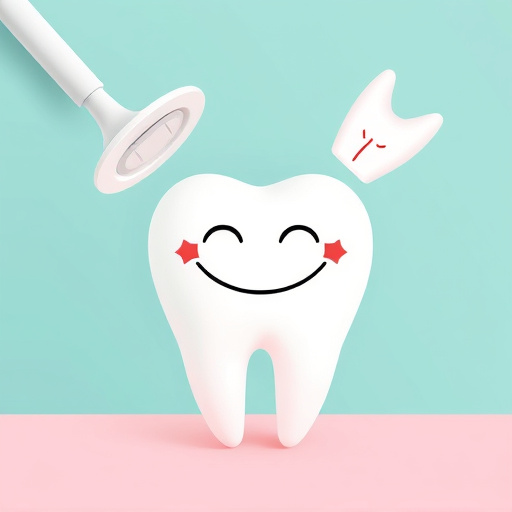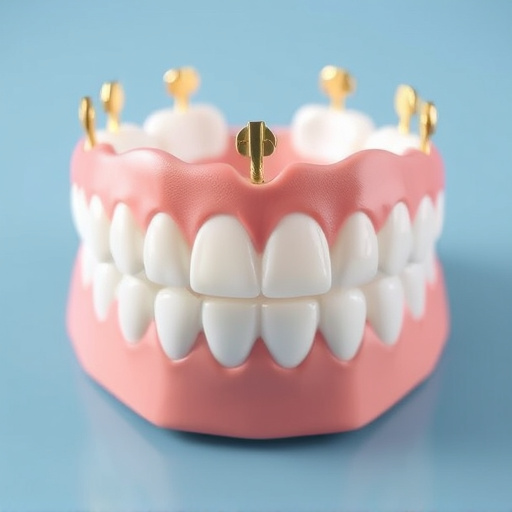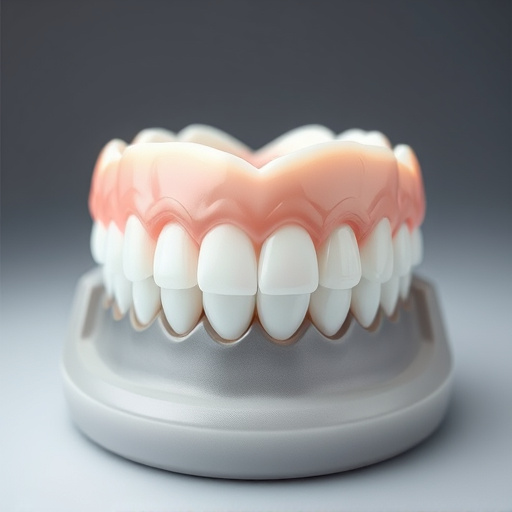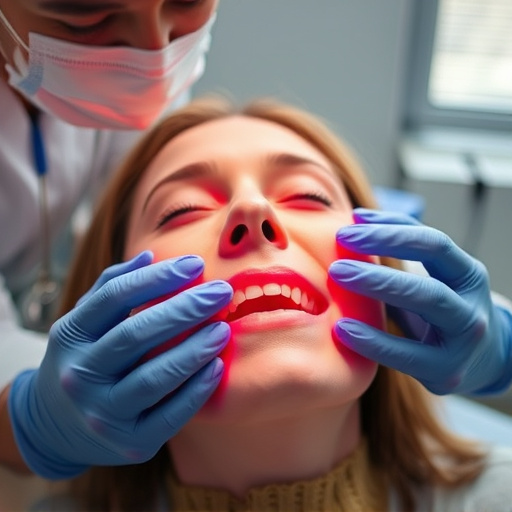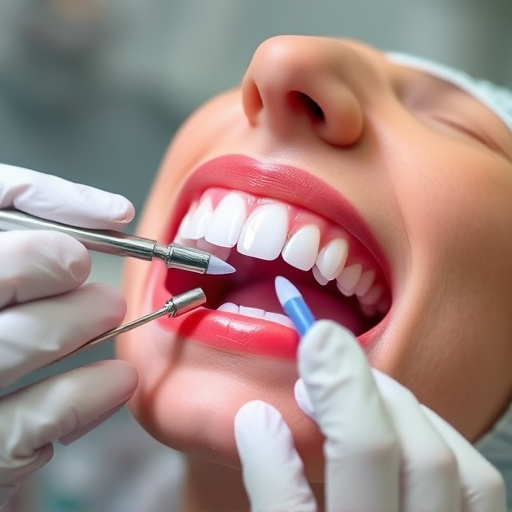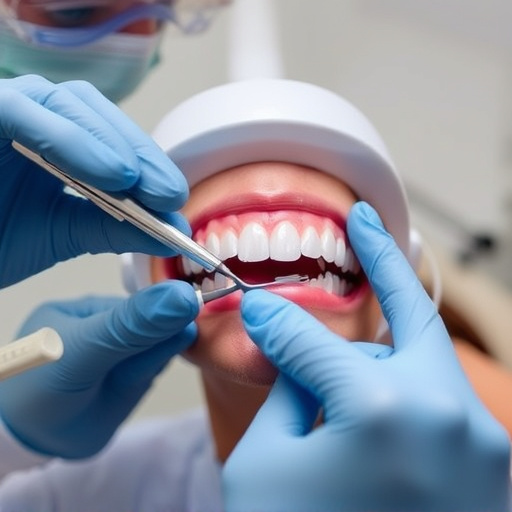Occlusal adjustment, a precise dental procedure, optimizes bite alignment, alleviating jaw pain caused by improper chewing mechanics. By correcting overbites, underbites, and cross-bites, this non-invasive method reduces strain on jaw joints and muscles, offering a conservative alternative to extractions or extensive cosmetic procedures. Clear aligners, a modern technique, discreetly aid in tooth alignment. Understanding occlusal adjustment empowers individuals to make informed decisions about their dental health, providing effective solutions for chronic jaw pain. Regular dental cleanings complement this treatment, promoting oral health and improving quality of life. Early intervention for children with jaw discomfort is crucial for long-term relief.
Occlusal adjustment, a specialized dental procedure, offers a profound solution for individuals grappling with persistent jaw pain. This approach, centered around aligning teeth and jaws optimally, provides a holistic remedy for various jaw-related discomforts. By understanding the intricate relationship between dental alignment and overall oral health, practitioners can effectively manage conditions like temporomandibular joint disorder (TMJ) and bruxism. Explore these strategies to achieve balanced occlusal adjustment, offering lasting relief from focused jaw pain.
- Understanding Occlusal Adjustment: A Foundation for Jaw Pain Relief
- The Role of Dental Alignment in Managing Jaw-Related Discomfort
- Effective Strategies for Optimal Occlusal Balance and Long-Lasting Pain Management
Understanding Occlusal Adjustment: A Foundation for Jaw Pain Relief

Occlusal adjustment is a dental procedure that focuses on improving the bite alignment between the upper and lower teeth. It plays a pivotal role in jaw pain management, addressing issues stemming from improper chewing mechanics. By meticulously adjusting the occlusal surfaces of teeth, dentists can correct bite problems like overbite, underbite, or cross-bites. This adjustment ensures optimal contact between teeth, reducing excessive forces on specific jaw joints and muscles, which are often the root cause of chronic jaw pain.
This conservative approach to jaw pain relief is particularly beneficial for patients seeking alternatives to invasive procedures such as tooth extractions or extensive cosmetic dentistry. Modern techniques, like clear aligners, offer a discreet method for achieving occlusal adjustment, appealing to those who prefer non-surgical interventions. Ultimately, understanding the fundamentals of occlusal adjustment empowers individuals to make informed decisions regarding their dental health and embrace effective solutions for managing jaw pain without drastic measures.
The Role of Dental Alignment in Managing Jaw-Related Discomfort

Proper dental alignment plays a pivotal role in managing jaw-related discomfort, commonly known as TMJ (Templeo-mandibular joint) disorder. Occlusal adjustment, a meticulous process that aligns the teeth and bite correctly, is a cornerstone of treatment for such conditions. By ensuring teeth are properly positioned, this adjustment reduces excessive stress on the temporomandibular joint, leading to alleviation of pain and dysfunction.
In general dentistry, clear aligners have emerged as a popular and effective tool for occlusal adjustment, offering a discreet alternative to traditional braces. Regular dental cleanings complement these efforts by removing plaque and tartar buildup, which can exacerbate jaw issues. Together, these procedures contribute to a comprehensive approach to managing and preventing jaw pain, promoting overall oral health and enhancing quality of life.
Effective Strategies for Optimal Occlusal Balance and Long-Lasting Pain Management

Maintaining optimal occlusal balance is a cornerstone of effective jaw pain management. This involves a multi-faceted approach that goes beyond mere correction of dental misalignments. Comprehensive dental care, including regular checkups and detailed oral examinations, plays a vital role in identifying potential issues early on. Techniques such as occlusal adjustment, where the bite is precisely modified to align upper and lower teeth, can significantly alleviate pressure points and reduce pain. Additionally, dental bonding, a procedure that involves adhering composite materials to teeth for filling or reshaping purposes, offers a conservative solution for achieving better occlusal harmony.
For children experiencing jaw discomfort, early intervention in their growing years is crucial. Children’s dentistry specialists are trained to address occlusal problems that may arise due to habits like thumb sucking or tongue thrusting. By implementing these comprehensive strategies, patients can achieve not only immediate relief from pain but also long-lasting results that contribute to overall oral health and quality of life.
Occlusal adjustment plays a pivotal role in managing focused jaw pain, offering a holistic approach to relief. By understanding the foundation of dental alignment and employing effective strategies for optimal balance, individuals can experience long-lasting pain management. This tailored method addresses the root causes of jaw-related discomfort, providing a lasting solution rather than merely treating symptoms.









